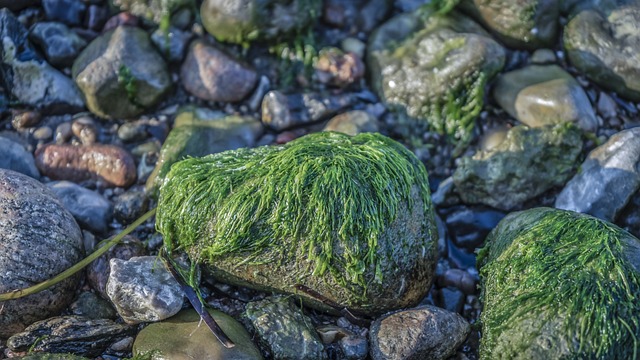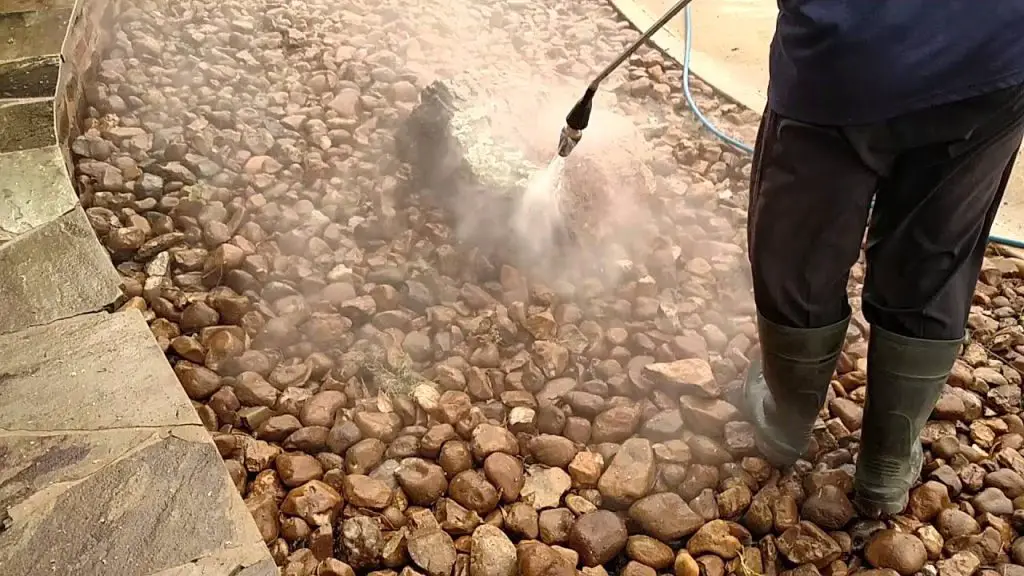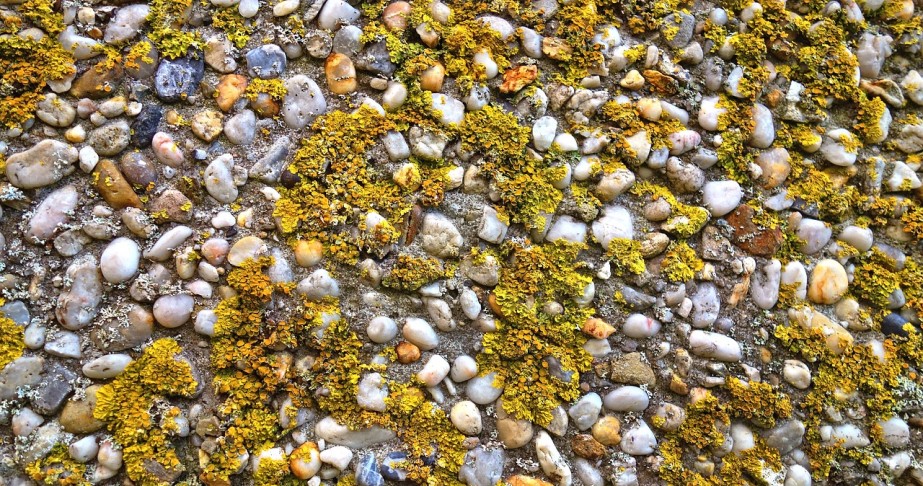As a homeowner or landscape enthusiast, you understand the significance of maintaining a pristine outdoor environment.
From lush gardens to stunning rock formations, every element contributes to the overall beauty and serenity of your surroundings.
However, there’s a silent invader lurking amidst your landscape that can disrupt this tranquility: algae.
Algae growth on landscape rocks can have a profound impact on the aesthetics of your outdoor space.
Those once captivating rocks, weathered by time and nature, now stand marred by slimy green or black coatings, diminishing their natural allure.
Combatting this formidable foe is paramount to restoring your landscape rocks to their former glory.
Why Algae Grow on Landscape Rocks
Algae are simple, plant-like organisms that can range in color and texture, from green and slimy to black and crusty.
They require moisture, sunlight, and nutrients to grow, making landscape rocks an ideal habitat.
Different types of algae, such as green algae, black algae, or moss, can take hold of your rocks, creating an unsightly appearance.
Methods for Cleaning Algae off Landscape Rocks

Cleaning algae off landscape rocks requires effective methods tailored to the severity of the infestation.
Here are various approaches you can employ based on the intensity of algae growth.
Related: How to Use Lava Rocks for Plants (Ultimate Guide)
Manual Removal Techniques
For lighter algae growth, manual removal techniques prove effective.
Scrubbing the rocks with a stiff brush or bristle broom can help dislodge algae. Use back-and-forth or circular motions to ensure thorough cleaning.
For stubborn spots, scraping with a putty knife or chiseling with a flat-blade screwdriver can be employed.
Natural Cleaning Solutions
Moderate algae problems can be addressed using natural cleaning solutions that are safe and environmentally friendly.
A mixture of vinegar and water (1:1 ratio) can be applied to the affected areas.
Alternatively, a paste made from baking soda and water can be spread onto the rocks, left to sit for a while, and then scrubbed off.
Chemical Treatments and Commercial Products
In cases of more stubborn algae infestations, chemical treatments and commercial products can provide powerful solutions.
Algaecides and biocides specifically designed to eliminate algae can be applied according to the manufacturer’s instructions.
Choose products that are safe for the rocks and surrounding vegetation.
Pressure Washing and Power Cleaning
For severe algae growth or large areas, pressure washing or power cleaning can effectively remove the algae.
High-pressure water streams can dislodge and wash away the algae, restoring the cleanliness of the rocks.
Take care when using these methods to avoid damaging the rocks or surrounding plants.
Related: Top 7 Cons of Decomposed Granite
Step-by-Step Guide for Cleaning Algae off Landscape Rocks
Use this guide to redeem your rocks from algae.

Step 1: Assess the Severity of Algae Growth
Begin by evaluating the extent of algae growth on your rocks. Take note of the coverage area and the intensity of the infestation.
This assessment will help determine the most suitable cleaning method and the level of effort required.
Step 2: Gather the Necessary Tools
Gather the tools and safety equipment you’ll need before you begin the cleaning.
This may include a stiff brush or bristle broom, a putty knife or chisel for scraping, a bucket for mixing cleaning solutions, protective gloves, goggles, and appropriate footwear.
Ensure your safety equipment is in good condition and ready to use.
Step 3: Prepare the Cleaning Solution
Prepare the necessary cleaning solution or select a suitable commercial product, depending on the cleaning method you choose.
If using a natural solution, mix vinegar and water in equal parts or create a paste with baking soda and water.
If using a chemical treatment or commercial product, carefully follow the instructions provided by the manufacturer.
Step 3: Apply the Selected Cleaning Method
With your cleaning solution or product ready, apply it to the affected areas of the landscape rocks.
Use the appropriate tool (brush, scraper, or pressure washer) to apply the solution evenly and ensure thorough coverage.
Work in small sections, focusing on one area at a time for better control and effectiveness.
Step 4: Rinse the Rocks
After applying the cleaning solution or product, rinse the rocks thoroughly with clean water.
This will remove the loosened algae and any residue from the cleaning agent. Inspect the rocks to assess the level of cleanliness.
If needed, repeat the cleaning process in areas where algae persist or for more stubborn growth.
Step 5: Implement Post-Cleaning Maintenance
Once the rocks are clean, implement post-cleaning maintenance practices to prevent future algae growth.
Regularly inspect the rocks and perform preventive cleanings as needed to maintain their pristine condition.
Related: Little-known Advantages of Foam Paint Rollers
Prevention Techniques to Minimize Algae Growth in the Future

Algae growth on landscape rocks can be effectively minimized by implementing a range of preventive techniques.
You can use the techniques to create an environment that’s less conducive to algae colonization.
Below are some valuable prevention strategies to consider.
Implement Proper Drainage Systems
Adequate drainage is essential for preventing excessive moisture buildup that promotes algae growth.
Ensure that your landscape rocks are installed on a well-drained base or use gravel or permeable materials that allow water to flow away easily.
Consider incorporating French drains or slope grading to divert water away from the rocks and prevent pooling or stagnant water.
Control Moisture Levels
Algae thrive in damp environments, so controlling moisture levels is important.
Avoid overwatering your landscape rocks, especially in shaded areas where moisture tends to linger.
Adjust your irrigation system or watering schedule accordingly to prevent excessive moisture accumulation.
Regularly inspect the rocks for signs of moisture retention, such as moss or slimy patches, and take immediate action to address any issues.
Promote Sunlight Exposure
Algae growth is inhibited by sunlight, so maximizing sunlight exposure to your landscape rocks is an effective prevention technique.
Trim back overhanging branches or vegetation that cast excessive shade on the rocks.
Consider strategic pruning or selective thinning to allow more sunlight to reach the surface of the rocks. This will create an environment less favorable for algae to thrive.
Choose Algae-Resistant Rocks and Materials
When selecting rocks for your landscape, opt for those that are naturally resistant to algae growth.
Rocks such as granite, quartzite, and lava rock are less susceptible to algae infestation due to their smooth surfaces and low porosity.
Avoid porous rocks like sandstone or limestone, which provide a conducive environment for algae to take hold.
Also, consider using algae-resistant coatings or sealants to further protect the rocks from algae growth.
Regular Maintenance and Cleaning
Regularly inspect and clean your landscape rocks to prevent algae from gaining a foothold.
Perform routine inspections and remove any organic debris, such as fallen leaves or twigs, that may contribute to moisture retention and provide nutrients for algae growth.
Incorporate periodic cleaning and maintenance practices as part of your overall landscape care routine to address any early signs of infestation before it becomes a major problem.
Related
- Shadow Box Fence Pros and Cons
- Top 5 Freeman Framing Nailers Review
- Shadow Box Fence Vs Board on Board Fence (Side by Side Comparison)
- Board on Board Fence Pros and Cons
- Top 5 Types of Pillowcase Closures
- Unknown Advantages of Foam Paint Rollers
- Mexican Landscapers/Yard Workers: All You Need to Know
- 2 Unique Purposes of the Sprinkler Valve Bleed Screw


